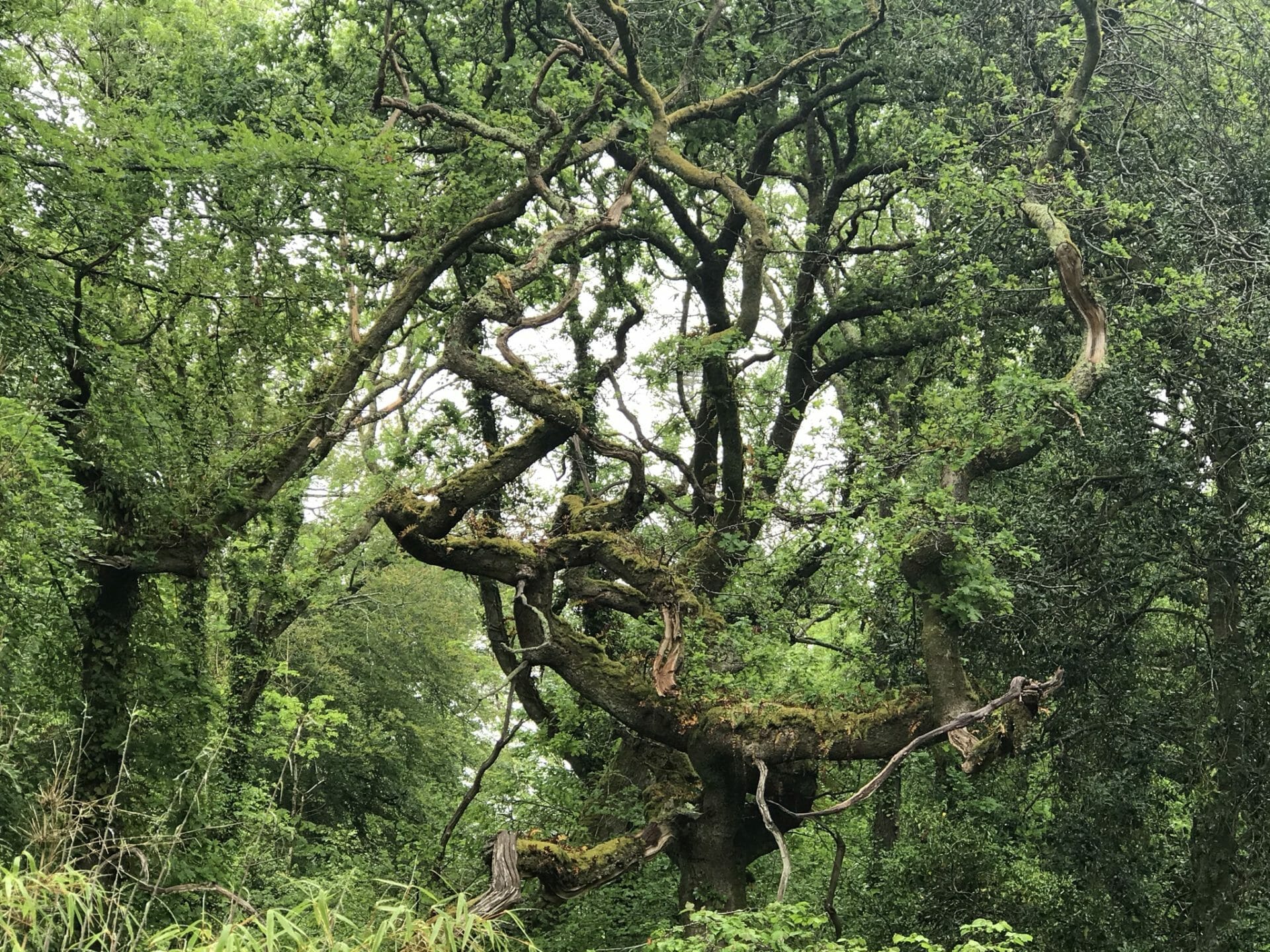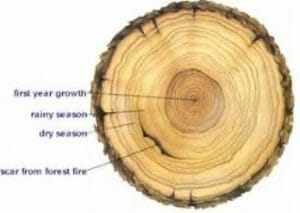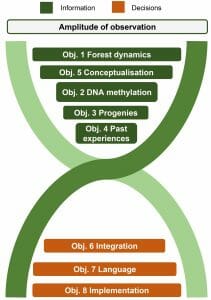What is ‘Understanding Memory of UK Treescapes for Better Resilience and Adaptation (MEMBRA)’?
We know that trees retain a record of history – but do they have memory?
It has long been known that tree growth rings provide a record of historic climate and other extreme events. As just one example, all trees in the UK planted more than 50 years ago will have a tree ring record showing the extreme drought event of 1976 – and from this record we can quantify impacts on individual tree growth. But what about other tree characteristics?
Anyone living in the UK more than 50 years ago no doubt has vivid memories of the 1976 drought – and will adjust their response to the consequences of subsequent drought events (e.g. hosepipe bans) partly based on those memories.
Did trees also retain a functional memory of that event? If they did, how? How long can such memories persist given that trees can live for 100’s of years? Do these memories enhance tree responses to future drought events? Can they be passed on to progeny via seeds?
Answering these questions is part of the focus of MEMBRA, and not just in response to drought stress, but disease, insect attack and extreme late cold.
Detailed Description
MEMBRA will advance the concept of memories of stress in trees. Memory is the acquisition, retention and transmission of information guiding future action. It is used habitually by humans (e.g. in reading this Summary), is easily detectable in the behaviour of animals, and is the basis of machine-learning computer codes.
However is it meaningful to talk of the ‘memory of trees’? Previous research has established that plants can write and access a record of prior stress, making the phrase as meaningful to discuss as the selfishness of genes or the (artificial) intelligence of a machine.
The imprinting of memory in plants mostly happens by altering its epigenetic signature: i.e., changes that occur to the DNA that alter the activity of some genes, but that do not involve changes of the DNA sequence itself. The specific epigenetic marks known to be responsible for long-term memory, including transgenerational resistance, arise from the replacement of hydrogen atoms by methyl groups in the DNA base, cytosine.
The understanding of stress memory in trees opens new paths to consider, e.g. the re-conceptualisation of environmental ethics and even tree consciousness. MEMBRA will collate information on how memory has been represented as a characteristic of trees. The project will study how this alters our understanding of the evolution and resilience of treescapes, how a consideration and appreciation of memory in trees can foster moral understanding of treescapes, and how the resulting ethical valuing of trees challenges a utilitarian and monetised ‘ecosystem services’ valuation of treescapes.
MEMBRA will provide the tools to identify the species and populations that will result in better resilience and adaptation and that will therefore be used in conservation and planting strategies. With the knowledge on how a consideration and appreciation of memory in trees can foster moral understanding of trees, we will identify and use new language to incorporate the concept of tree memory into policy-based initiatives. The final convergence of the results of MEMBRA will feed into policy development and the flourishing of the first stages of a memory-inspired intentional forest: the MEMBRA Treescape.
The objectives of MEMBRA are divided into work packages (WP), which will provide information on how stress shapes treescapes via memory (WP1) and use the novel understanding of tree memory to guide decisions (WP2).
WP1: Information
Objective 1. To measure the effects of stresses on forest dynamics. We will provide a broad picture of the resilience response of UK forests, by investigating the effect stress on the dynamics of natural and experimental forests.
Objective 2. To measure the extent to which stressful experiences result in changes in DNA methylation in exemplar UK tree species. We will perform genome wide DNA methylation analyses in response to drought, diseases, elevated CO2, herbivory and frost to investigate imprinting of memory.
Objective 3. To detect memory imprinting of stressful experiences transmitted to following generations in exemplar UK tree species. We will provide a detailed characterisation of the phenotypes underpinning trans-generational stress memories providing adaptation to progeny.
Objective 4. To test whether past droughts can impact the response of trees to subsequent drought events and diseases. We will identify the influence of past drought stress on the response of trees to recent drought and Acute Oak Decline (AOD) through the study of tree rings and carbon isotope analysis.
Objective 5. To explain the implications of objectives 1-4 for the understanding of multispecies consciousness and agency. Through a series of arts-humanities initiatives, we will bring together researchers and stakeholders from across different disciplines to refine our understanding of memory in trees and how disrupting current perspectives might impact upon our ethical relationship to trees.
WP2: Decisions
Objective 6. To integrate the capacity of tree species to develop memory into the spectrum of tree form and function and test its influence on forest resilience. Memory will be used as a plant functional trait to help select the most resilient forests and populations to be targeted as a source of seeds for afforestation programmes.
Objective 7. To create a language that incorporates the understanding of tree memory and agency. Analysis of language and rhetoric will advance the notion of ‘linguistic justice’ for trees and complement the recommendations centred around the results from objectives 1-4 and 6 (which trees should be conserved and planted) and virtue ethics resulting from Obj 5 (how memory might add to the quality of tree character).
Objective 8. To support policy decision-making through plain-language reporting of results, contributions to governmental strategies, and targeted delivery of early views of results to chosen stakeholders. We will bring together stakeholders from different sectors to incorporate the findings and the novel understandings of forests generated by MEMBRA into policy decisions and long-term initiatives.


